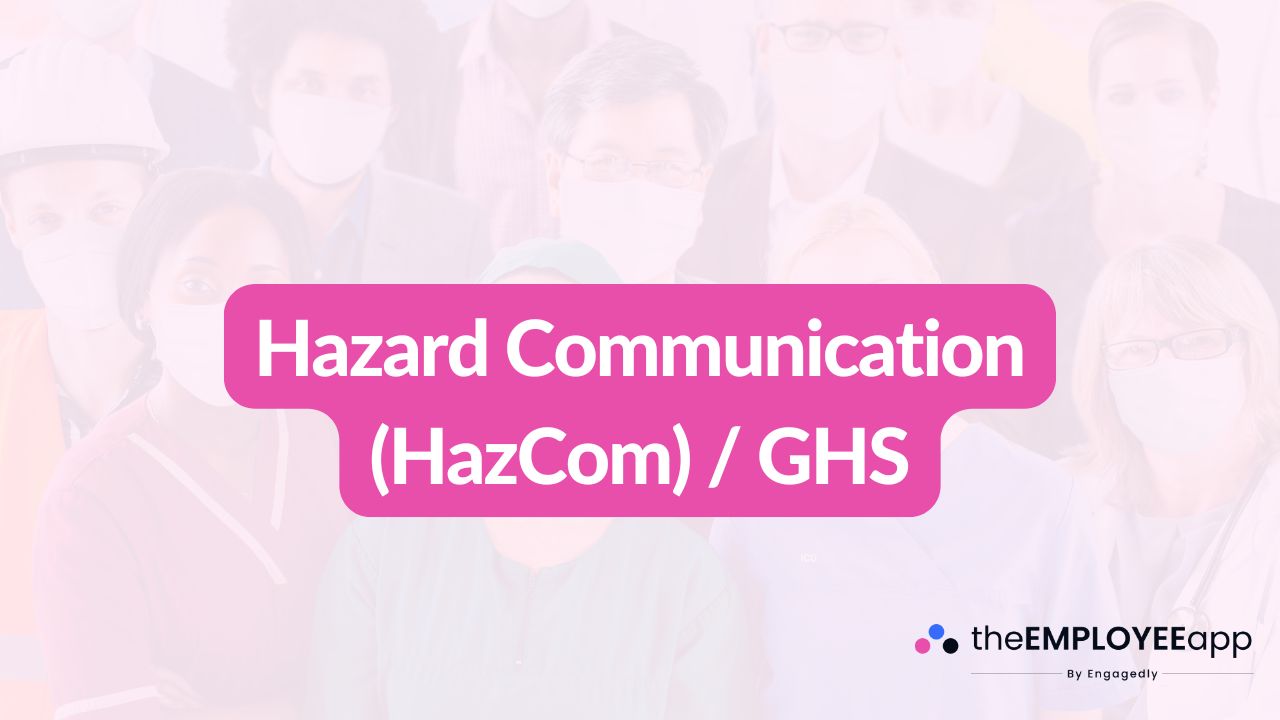
Hazard Communication, often referred to as HazCom, is a critical workplace safety standard designed to ensure employees are informed about the hazardous chemicals they may encounter on the job. It provides guidelines on labeling, classification, and communication of chemical risks so that workers understand potential dangers and know how to protect themselves.
The Globally Harmonized System (GHS) complements HazCom by standardizing chemical classification and labeling worldwide. This ensures that hazard information is consistent across industries and borders, making it easier for workers to identify risks regardless of location. Together, HazCom and GHS create a framework that promotes transparency, safety, and compliance in workplaces that use or store hazardous substances.
Every day, millions of employees handle or work near chemicals that can cause harm if not managed properly. Without clear labeling and training, workers may be exposed to toxic substances, flammable materials, or reactive chemicals without realizing the risk. HazCom ensures that hazards are not hidden—it gives employees the knowledge they need to recognize potential dangers and respond appropriately.
From an organizational perspective, hazard communication reduces the risk of accidents, injuries, and costly incidents. It also ensures compliance with regulatory standards, minimizing legal and financial liabilities. More importantly, it demonstrates a company’s commitment to protecting its workforce.
The Hazard Communication Standard has several essential components that organizations must implement:
Chemical Inventory: Employers must maintain a complete list of all hazardous chemicals present in the workplace.
Safety Data Sheets (SDS): Formerly called Material Safety Data Sheets (MSDS), these provide detailed information about each chemical, including hazards, handling procedures, and first aid measures.
Labeling Requirements: Every hazardous chemical must have proper labels that clearly identify risks using standardized symbols, pictograms, and signal words.
Employee Training: Workers must be trained to understand chemical labels, SDS information, and safe handling practices.
Written Program: Employers must have a formal HazCom program outlining how information will be shared and maintained.
The Globally Harmonized System (GHS) was developed to create a universal approach to chemical classification and labeling. Before GHS, different countries had different systems, making it confusing and potentially dangerous for companies that operated internationally.
With GHS, chemical hazards are classified consistently, and labels use standardized pictograms, hazard statements, and precautionary measures. For example, a flammable liquid will carry the same flame symbol whether it’s in the United States, Europe, or Asia. This global alignment improves clarity, reduces confusion, and enhances worker safety worldwide.
Implementing effective hazard communication provides significant benefits for both employees and organizations:
For Employees:
Better awareness of workplace risks.
Increased confidence in handling chemicals safely.
Improved health and safety outcomes.
For Employers:
Reduced risk of chemical-related accidents and illnesses.
Enhanced compliance with OSHA and international safety standards.
Lower costs from incidents, downtime, or legal issues.
Stronger culture of safety and accountability.
Despite the clear benefits, organizations often face challenges when implementing HazCom and GHS. Common issues include outdated chemical inventories, incomplete employee training, or inconsistent labeling practices. In some cases, language barriers or lack of awareness can reduce the effectiveness of communication efforts. To overcome these challenges, companies must invest in training programs, update safety protocols regularly, and ensure that all employees understand their role in hazard communication.
To make HazCom and GHS effective, organizations should adopt a proactive approach:
Regularly update chemical inventories and safety data sheets.
Use clear, visible labeling and signage in all work areas.
Conduct frequent employee training sessions, including refreshers.
Encourage a safety-first culture where workers feel comfortable reporting issues.
Audit compliance regularly to identify and close gaps.
Hazard Communication (HazCom) and the Globally Harmonized System (GHS) are vital frameworks for protecting employees from chemical hazards in the workplace. By providing clear, consistent information about risks, organizations empower their workforce to stay safe and make informed decisions. When implemented effectively, HazCom and GHS not only prevent accidents but also build trust, improve compliance, and support a safer workplace culture overall.
